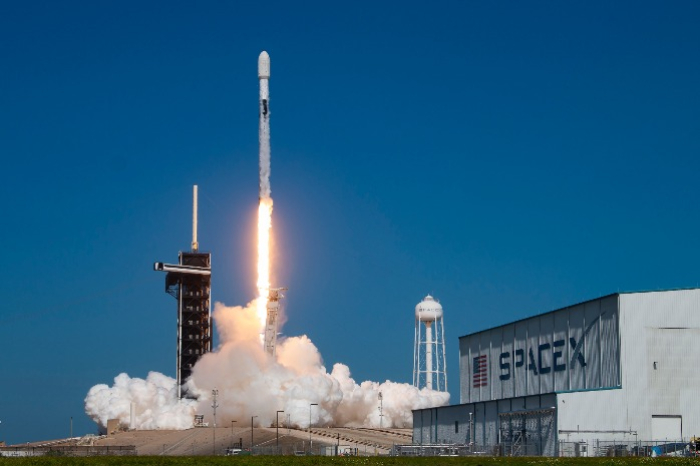
A Falcon 9 rocket developed by Tesla Inc. founder Elon Musk’s SpaceX successfully launched the Koreasat-6A, a communication satellite that will deliver both broadcast and fixed satellite services to South Korea, for the Asian country’s satellite operator KT SAT.
The Koreasat-6A was launched from Cape Canaveral Space Force Station in Florida on Monday, Nov.11, at 12:22 pm EST (16:22 GMT).
After about eight minutes into the flight, SpaceX’s Falcon 9 booster landed at Landing Zone 1 at Cape Canaveral Space Force Station, while the Falcon 9’s upper stage continued hauling the Koreasat-6A to geosynchronous transfer orbit to deploy it there about 34 minutes after launch, according to SpaceX’s satellite launch broadcasting.
The satellite is KT SAT’s fifth geostationary satellite, Mugunghwa, for satellite communication services in Korea. This is the first Mugunghwa satellite launch since 2017 when the company sent Koreasat-5A and Koreasat-7 satellites into orbit.
The Koreasat-6A is expected to be positioned in geostationary orbit about one month later and start its official communication services in the first quarter of next year after multiple tests in the orbit via KOSMOS, KT SAT’s self-developed satellite monitoring operation system.

Following the successful mission on Monday, SpaceX’s Falcon 9 first-stage booster made 23rd landing, marking SapceX’s 364th landing of an orbital-class rocket overall, including boosters for both Falcon 9 and Falcon Heavy, according to SpaceX.
Falcon 9 is a reusable, two-stage rocket designed and manufactured by SpaceX.
It was also the company’s 107th successful launch of the year.
MULTI-ORBIT SATELLITE OPERATOR
The Koreasat-6A fitted with six broadcast transponders and 20 fixed satellite service (FSS) transponders will cover Korea with broadcast and FSS services after replacing the current Koreasat-6 satellite.
It was built by Thales Alenia Space, a global space manufacturer jointly set up by Thales and Leonardo, under a contract signed with KT SAT, Korean telecom giant KT Corp.’s satellite service operator, in September 2022, according to the French company.
Thales Alenia Space was responsible for the design, construction, testing and ground delivery of the Koreasat-6A, followed by orbital positioning and in-orbit testing services. KT SAT will operate the satellite throughout the satellite’s expected lifetime of 15 years.

The Korean satellite operator provides satellite services over Asia, the Middle East, and Africa.
It has been seeking to become a multi-orbit satellite provider.
In February, KT SAT announced a plan to introduce SpaceX’s low-earth orbit satellite internet service Starlink in Korea.
Operating at an altitude of 35,000 kilometers, KT’s geostationary satellites provide stable but relatively slow communication services.
By contrast, Starlink’s low-earth orbit satellites, with an altitude of 330-570 km, offer faster data transmission. Its coverage is much smaller but its monthly service fee is much cheaper than geostationary satellites.
By Ji-Eun Jeong
jeong@hankyung.com
Sookyung Seo edited this article.













